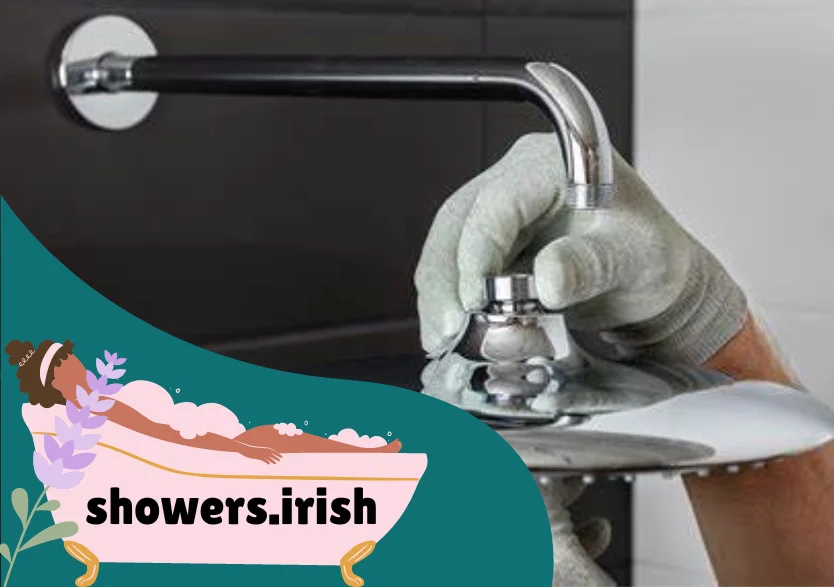Transforming your bathroom into a luxurious and functional space involves more than just aesthetics; it requires careful planning and execution. Installing a shower cubicle, head, and screen might seem daunting, but with the right guidance, it can be a straightforward DIY project. In this comprehensive guide, we’ll walk you through the process step-by-step, ensuring that you have the knowledge and confidence to fit a shower cubicle, head, and screen with precision.
Understanding the Basics of Shower Installation
Before diving into the installation process, it’s essential to understand the basic components and considerations involved in fitting a shower cubicle, head, and screen. This will help you approach the task methodically and avoid common pitfalls.
Components of a Shower Installation
When installing a shower, you need to be familiar with the main components involved:
- Shower Cubicle: The enclosure that contains the shower, protects the bathroom from water splashes.
- Shower Head: The device that dispenses water for showering.
- Shower Screen: A glass panel or door that prevents water from escaping the shower area.
Planning Your Shower Installation
Proper planning is crucial for a successful installation. Measure your bathroom space carefully and select a shower cubicle, head, and screen that fit well within the allocated area. Consider the water pressure in your home, as it will affect the performance of the shower head you choose. Additionally, ensure that the plumbing connections are accessible and compatible with your chosen shower fixtures.
Tools and Materials Needed
Gathering the right tools and materials before you begin will save you time and frustration. You’ll need:
- Drill and bits
- Screwdrivers
- Spirit level
- Silicone sealant and applicator
- Measuring tape
- Adjustable wrench
- Screws and wall plugs
- Shower cubicle kit, shower head, and shower screen
Now that you’re prepared let’s dive into the step-by-step process of fitting your shower cubicle, head, and screen.
How to Fit a Shower Cubicle
Fitting a shower cubicle is a critical step in ensuring your bathroom remains dry and functional. A well-installed cubicle not only looks good but also prevents water damage to your walls and floors.

Positioning the Shower Tray
The first step in fitting a shower cubicle is to position the shower tray correctly. The tray serves as the base of your cubicle, collecting water and directing it to the drain.
- Mark the Area: Use your measuring tape and a pencil to mark the area where the shower tray will be placed. Ensure that it is level and square with the surrounding walls.
- Prepare the Floor: If your floor is uneven, you may need to level it with a self-leveling compound. This will ensure the tray sits flat, preventing water from pooling in one corner.
- Install the Tray: Apply a layer of silicone sealant to the base of the tray and position it in place. Press down firmly to secure it, and check with a spirit level to ensure it’s perfectly horizontal.
Assembling the Shower Cubicle
With the tray in place, the next step is to assemble the cubicle. Most shower cubicles come in kit form, with panels and fixtures that need to be assembled.
- Fit the Panels: Start by attaching the side panels to the tray. Align them carefully and secure them using the screws provided. Check for alignment with the spirit level.
- Install the Door: If your cubicle includes a door, install it next. Attach the hinges to the side panel and carefully hang the door, ensuring it swings freely without dragging.
- Seal the Joints: Once the cubicle is assembled, apply silicone sealant to all the joints and edges. This will prevent water from leaking out and protect the underlying structure from moisture damage.
Final Checks and Adjustments
Before moving on to the next stage, double-check all the components of the shower cubicle. Make sure the door opens and closes smoothly, the panels are secure, and the tray is level. Address any issues immediately to avoid problems later on.
How to Fit a Shower Head
The shower head is one of the most important elements of your shower experience. Installing it correctly ensures optimal water flow and pressure.

Choosing the Right Shower Head
Before you start the installation, it’s important to choose the right shower head. Consider factors such as water pressure, the type of showering experience you prefer (e.g., rain shower, massage jets), and compatibility with your existing plumbing.
Installing the Shower Arm
The shower arm is the pipe that connects the shower head to the water supply in the wall. Installing it correctly is crucial for the proper function of your shower head.
- Locate the Water Outlet: The water outlet is usually a threaded pipe protruding from the wall. Clean the threads to ensure a secure connection.
- Attach the Shower Arm: Wrap the threads of the water outlet with the plumber’s tape to prevent leaks. Then, screw the shower arm into place, tightening it with an adjustable wrench.
- Check the Alignment: Use a spirit level to ensure the shower arm is perfectly horizontal. This will prevent water from spraying at odd angles.
Mounting the Shower Head
With the shower arm in place, it’s time to mount the shower head.
- Attach the Shower Head: Screw the shower head onto the arm, ensuring a snug fit. Be careful not to overtighten, as this could damage the fittings.
- Test for Leaks: Turn on the water supply and check for any leaks around the connections. If you notice any drips, tighten the connections slightly until the leak stops.
- Adjust the Angle: Most shower heads allow you to adjust the angle of the spray. Position it to your preferred angle and make sure it remains stable during use.
How to Fit a Shower Screen
A shower screen is essential for keeping water contained within the shower area, protecting your bathroom from splashes and moisture damage.

Shower screens come in various styles, including fixed panels, sliding doors, and pivot doors. Choose a screen that fits your bathroom layout and complements your shower cubicle.
Installing the Wall Profiles
Wall profiles are the brackets that hold the shower screen in place. Proper installation is key to ensuring the screen is stable and secure.
- Mark the Position: Hold the wall profiles against the wall where the screen will be mounted. Use a pencil to mark the position of the screw holes.
- Drill the Holes: Drill the marked holes and insert wall plugs to provide a secure anchor for the screws.
- Attach the Profiles: Screw the wall profiles into place, making sure they are level and securely fastened to the wall.
Fitting the Shower Screen
With the wall profiles in place, the next step is to fit the shower screen itself.
- Position the Screen: Lift the screen into place and insert it into the wall profiles. Ensure it sits flush against the shower tray.
- Secure the Screen: Use the provided screws to secure the screen to the wall profiles. Double-check that the screen is aligned properly and opens/closes smoothly.
- Seal the Edges: Apply silicone sealant along the edges of the screen where it meets the walls and tray. This will prevent water from escaping and causing damage.
Final Touches and Testing
After installing the screen, give it a final inspection. Ensure all components are secure and properly aligned. Test the screen by turning on the shower and checking for any leaks or issues.
Conclusion
Fitting a shower cubicle, head, and screen might seem challenging at first, but with careful planning and attention to detail, it can be a rewarding DIY project. By following these step-by-step instructions, you can create a functional and stylish shower space that enhances your bathroom’s overall appeal.
Remember to take your time during the installation process, double-check all measurements and connections, and don’t hesitate to seek professional help if needed. With your new shower cubicle, head, and screen in place, you can enjoy a refreshing and rejuvenating shower experience every day.
For further reading and more bathroom DIY tips, check out our other guides on bathroom renovation and maintenance.
Frequently Asked Questions (FAQs)
1. How do I ensure my shower tray is level during installation?
To ensure your shower tray is level, use a spirit level when positioning it. If your floor is uneven, apply a self-leveling compound to create a flat surface before placing the tray.
2. What type of shower head should I choose for low water pressure?
For low water pressure, consider choosing a shower head designed specifically for low-pressure systems, such as an aerated or low-flow shower head, which mixes air with water to enhance the spray without requiring high pressure.
3. How do I prevent leaks in my shower cubicle?
To prevent leaks, apply silicone sealant along all joints and edges of the shower cubicle, including where the panels meet the tray and where the screen connects to the walls. Ensure all connections are tightly secured.
4. Can I install a shower screen on my own, or should I hire a professional?
Installing a shower screen can be a DIY project if you have basic tools and experience with home improvements. However, if you’re unsure or if the installation involves complex elements, it’s advisable to hire a professional to ensure a secure fit.
5. What should I do if my shower head is leaking after installation?
If your shower head is leaking, first check the connections to ensure they are tight. If the leak persists, remove the shower head, reapply the plumber’s tape to the threads, and reinstall it. If the issue continues, inspect the washer inside the shower head for wear and replace it if necessary.
For those looking to upgrade their bathroom, installing a walk-in shower can be a stylish and practical solution. A walk-in shower not only enhances the modern aesthetic of your bathroom but also adds convenience and accessibility. One key aspect of this installation is using a cement board, which provides a durable and water-resistant base for tiling. Whether you’re renovating or building a new shower space, understanding the role of cement boards in the installation process is crucial. It ensures your shower is well-protected against moisture, prolonging its lifespan and maintaining a pristine look.
To learn more about the step-by-step process of installing a walk-in shower using a cement board, including expert tips and considerations, check out this comprehensive guide: Install a Walk-In Shower with Cement Board. This resource will equip you with the knowledge to tackle your bathroom renovation with confidence.
Credit Website: www.ireland.ie/
